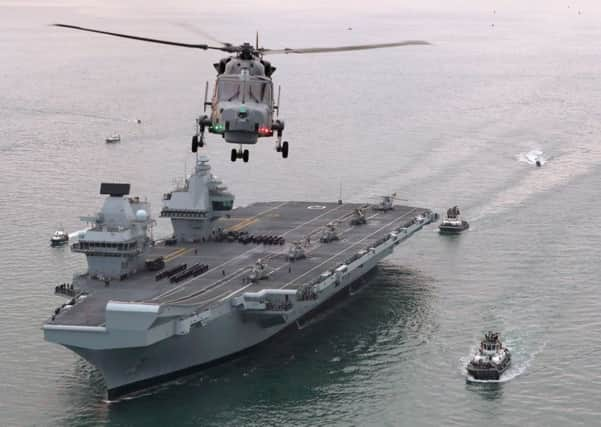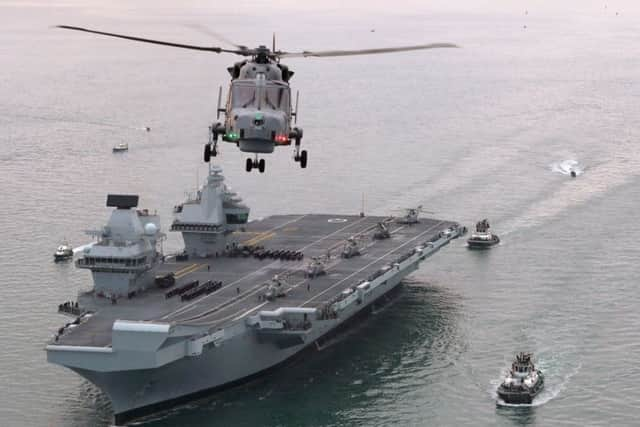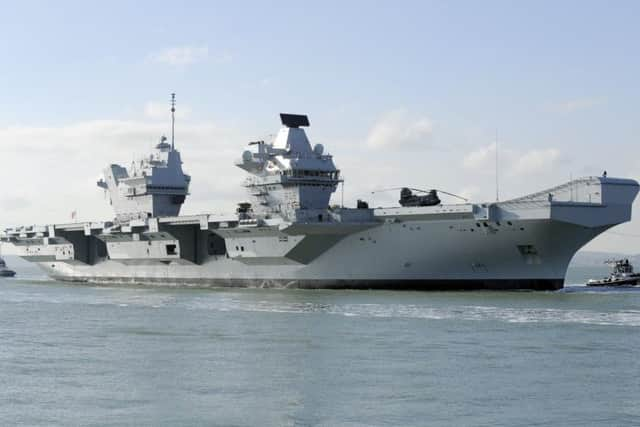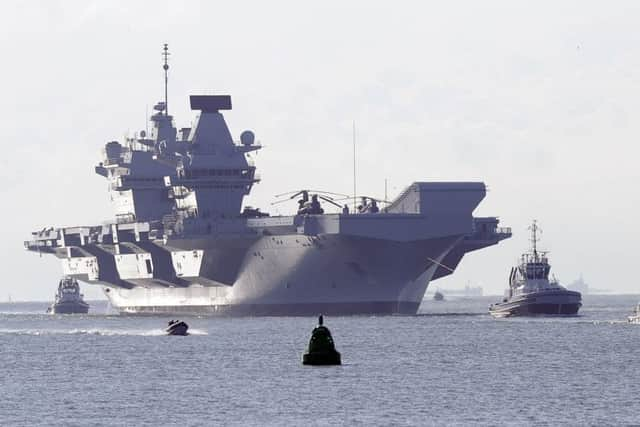Landing on HMS Queen Elizabeth is '˜like having the hand of God pushing down on you'


HMS Queen Elizabeth returned home to Portsmouth this morning after more than a month away at sea conducting helicopter flight trials.
About 1,000 test landings, in various weather conditions, were completed during the 65,000-tonne warship’s time in the Atlantic.
Advertisement
Hide AdAdvertisement
Hide AdDuring all the tests, helicopters equipped with special sensors were used to record data on each landing.


Commander Matt Grindon, who led the trials team on the ship, said: ‘We’ve been learning about the wind patterns on deck, this is a new design of ship and the way wind moves across the deck and affects flying is something that we’ve focused on in these trials.
‘Whilst turbulence is normal, one of my pilots has described it as the ‘Hand of God’ grabbing you and pushing you down onto the ship, which obviously requires a big power demand to stop the aircraft descending, so that’s given us some interesting insight.
‘Nonetheless we have been able to clear a much wider envelope than we expected. We’ve been challenged, but that’s exactly what these trials are for.’
Advertisement
Hide AdAdvertisement
Hide AdAll the information gathered will be analysed to identify the operational limitations of warship for aircraft including a Merlin Mk2, 3, 4, Chinook, the Apache attack helicopter and Wildcat.


Analysts will look at things like the deck motion, wind monitors on both the ship and the aircraft and analyse the points at which the aircraft reached their limits.
Neil Thomas, QinetiQ’s programme technical manager onboard Queen Elizabeth, said the trials have been very successful.
‘It’s gone extremely well, even through we had a very compressed timescale,’ he said. ‘We achieved 450 deck landings on Chinook and 540 on Merlin, which is pretty good going.
Advertisement
Hide AdAdvertisement
Hide Ad‘This is definitely a once-only career opportunity for us. It’s been an enormous challenge but well worth it for what we have achieved for the Royal Navy.’


Queen Elizabeth’s Commander Air, Cdr Mark Deller said the supercarrier was pushed to its limits, adding: ‘The ship has held up well, the deck is good and consequently the aircraft have behaved themselves, so all good news.’
Captain Jerry Kyd, commanding officer of Queen Elizabeth, was ‘delighted’ with the ‘rapid’ progress of the ship and described the tests as ‘an important milestone’ for the vessel.
‘We are rapidly approaching our deployment to the United States in the summer when we will see the first F-35B Lightning aircraft land on Queen Elizabeth’s deck,’ he added.
Advertisement
Hide AdAdvertisement
Hide Ad‘The ship is performing well and the marriage at sea of the Lightning and our carrier in a few months time will be a hugely symbolic event putting on notice that the UK is on the cusp of returning to fixed wing carrier operations at sea and a return to serious maritime power projection.’